back in a galaxy not too far away, back before photoshop, back before color even, back when there were only two programs, called macpaint and macdraw, and back when only a few guys actually knew how to use them[1] ...as first comics managing editor mike gold wrote in december 1985:
well, of course it had to happen. when we released the first shatter special last february, we thought it would do well — after all, nobody had ever done an entire comic book on a computer before.
but curiosity value wears thin pretty fast. we took a chance with the shatter special and printed higher than our distributor's orders might indicate — something that is very, very rare for first comics (when our books are gone, they're gone; we're not in the back issue business and nearly all of our comics "sell out.")
those extra copies sold out very, very quickly. the distributors could not keep the book in their warehouses. in fact, we were under a lot of pressure to do a second printing. "what the hell," we figured. "it's not a regularly published comic book, let's do a second printing."
that second printing "sold out" four days before it shipped from the printer — every copy we had was committed to the various distributors' warehouses all across north america and england.
so as we were thinking about doing a third — and final — printing on the shatter special, mike saenz and i started talking about what we'd do about shatter after our experimental six-issue back-up series in jon sable, freelance. we couldn't stay there — mike grell wanted his book back!
... actually, there was only one possible solution: shatter would have to appear in his own book.
the only question was how we would approach the project. we learned a lot from our six short experiments, and computer technology — particularly as it relates to apple's macintosh — evolved quite a bit since we started working on shatter. what you are seeing in this issue is a far cry from what you saw in the shatter special. the library of type fonts has expanded greatly, so the words in the balloons should be a lot more readable. we learned when to use digitizers and special effects, and — just as important — when not to use them.
apple came out with two giant leaps forward: they perfected macdraw, a new graphic arts program that can be used along with their macpaint. macdraw is fantastic: among other things, it allows mike to draw each object as a separate entity which he then can place behind or in front of other objects. shatter is no longer simply dots on paper.
better still, apple came out with their laserwriter, an unbelievable printer that produces crisp, sharp printouts of mike's work. for graphic art reproduction, the difference between the laserwriter and traditional dot-matrix printers is like the difference between glossy coffee table art books and paintings on cave walls. and even better still, the folks up at apple gave us a laserwriter. that sucker isn't exactly cheap; it's nice to know you're appreciated. thanks, apple!
(story by peter gillis and art by mike saenz)see next:
computer comix v2.0
computer comix v3.0[1] in fact, when artist saenz left the series after only a few issues, the book temporarily returned to traditional production methods since no one else knew how to use the computer equipment!
Monday, December 06, 2010
computer comix v1.0
Subscribe to:
Post Comments (Atom)
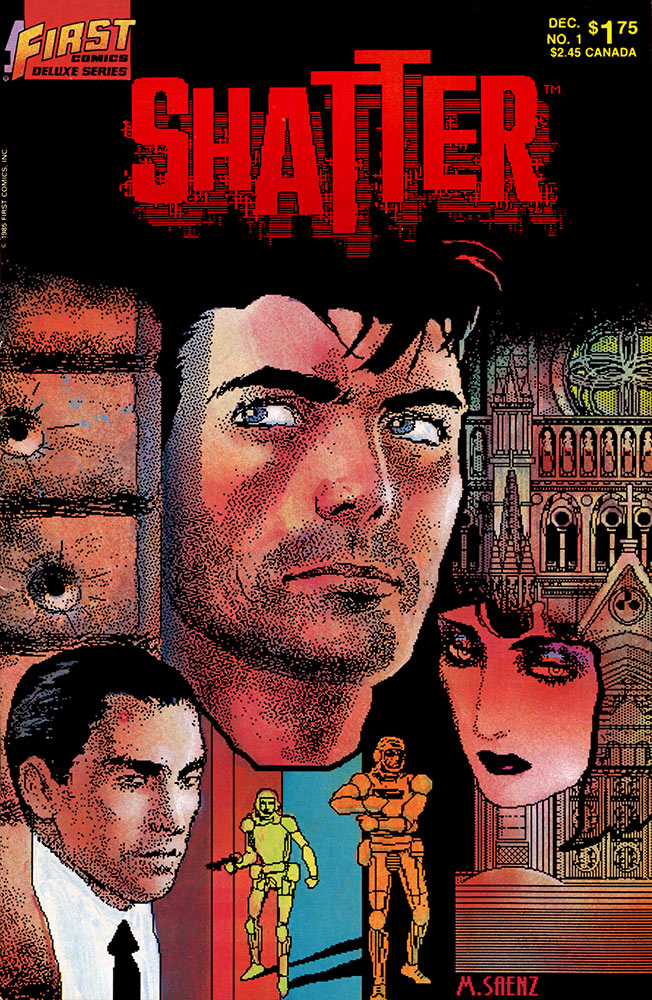
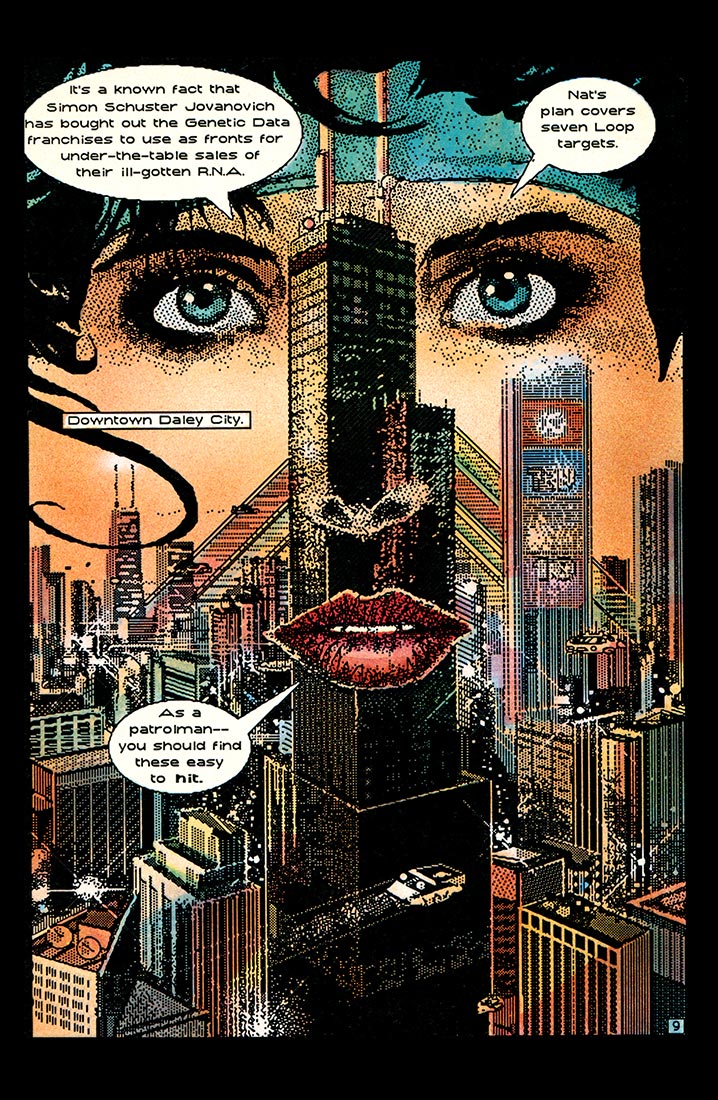

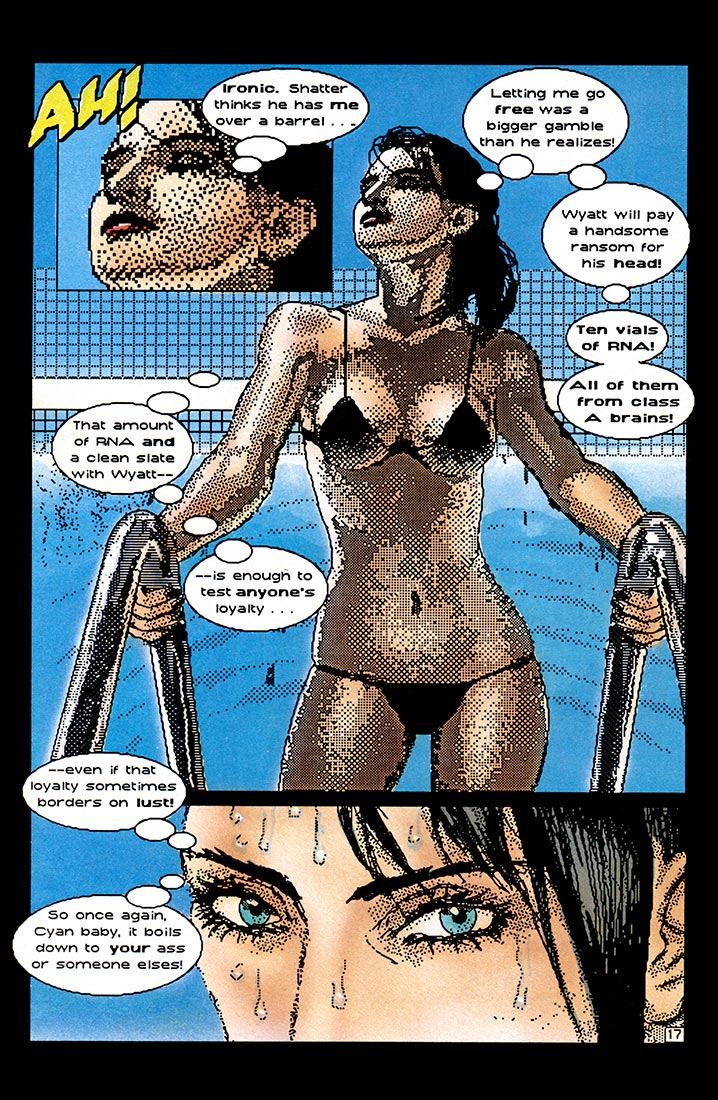
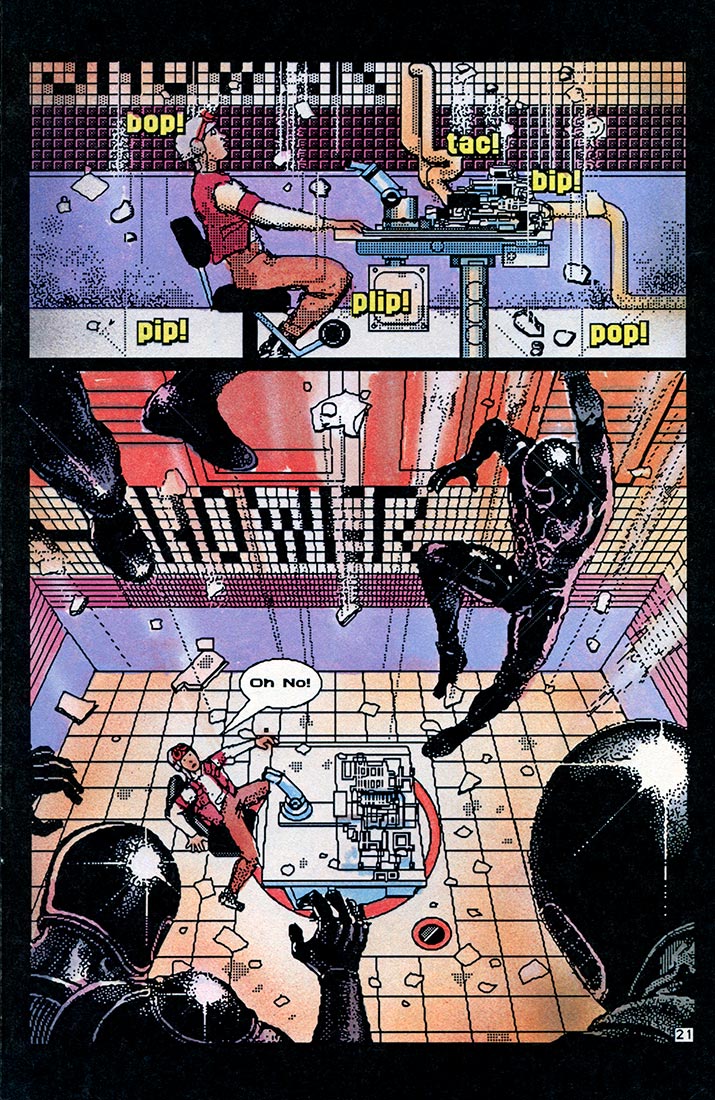
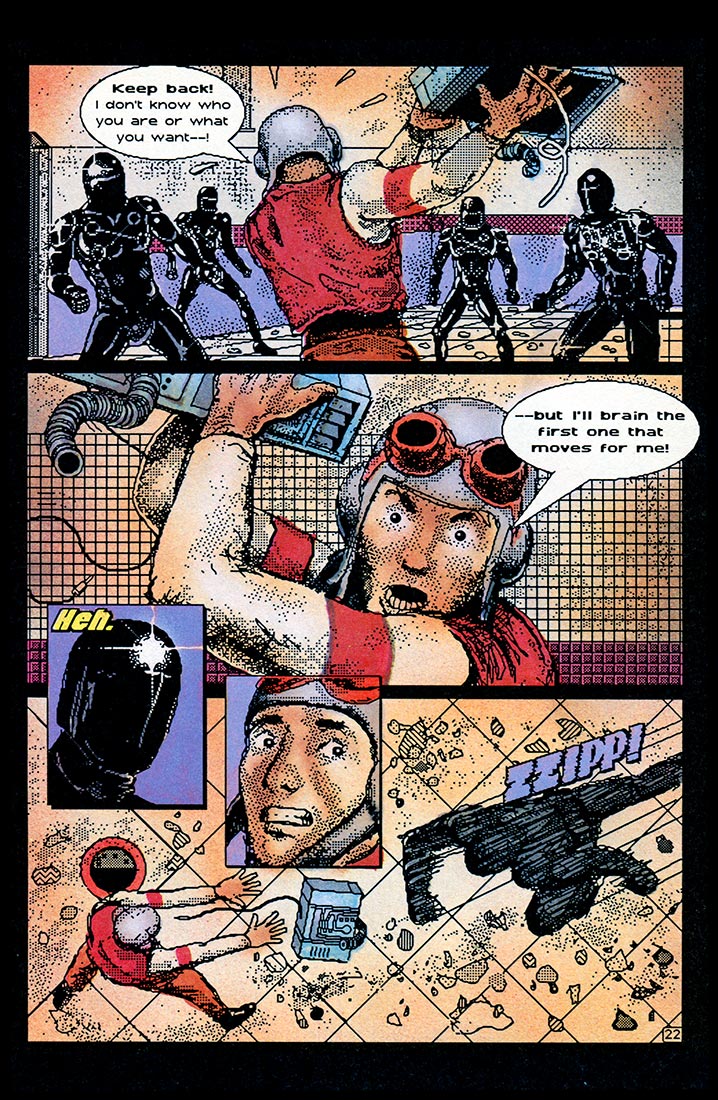


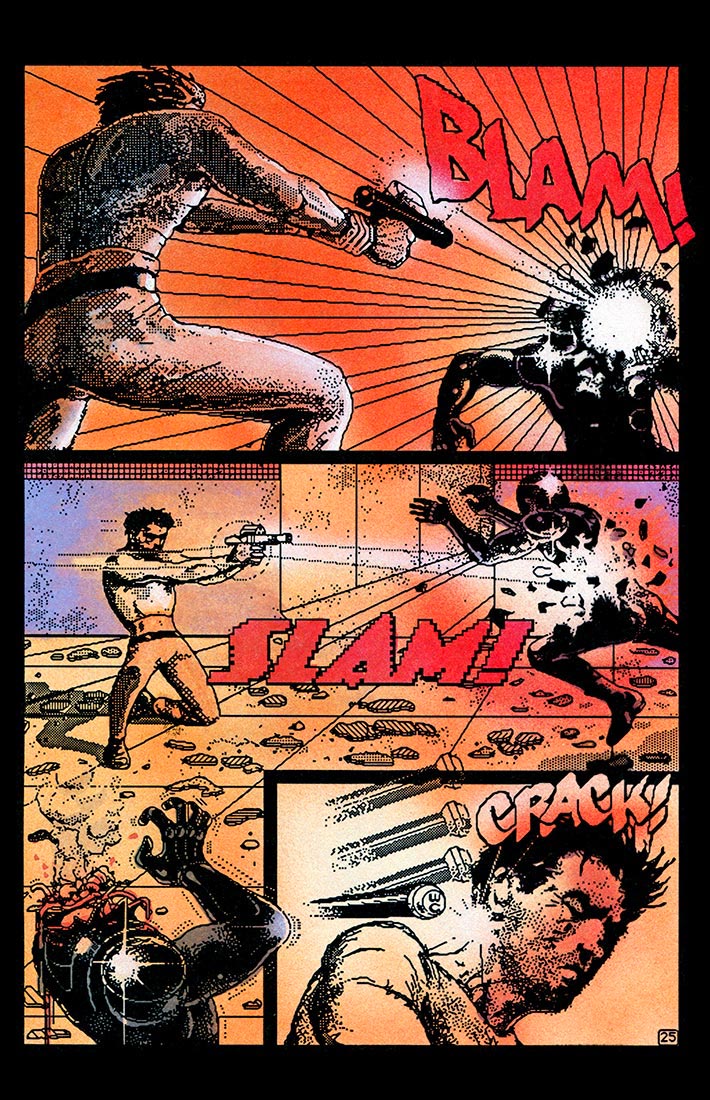














No comments:
Post a Comment